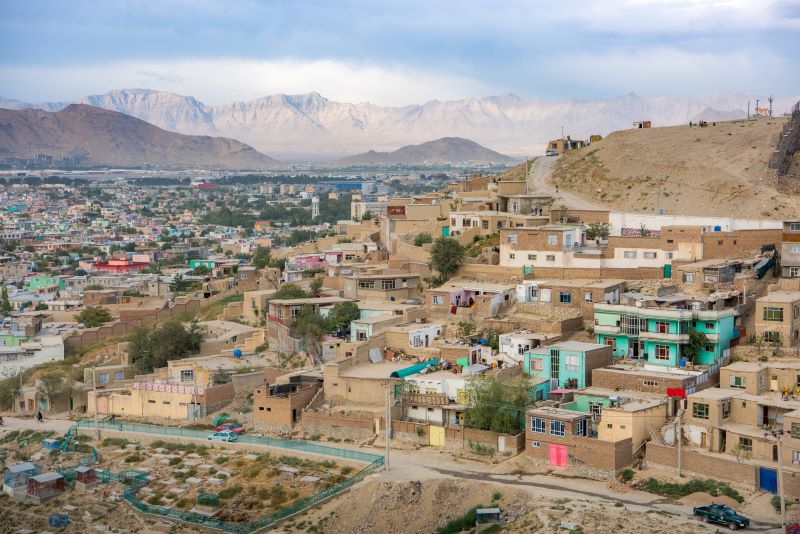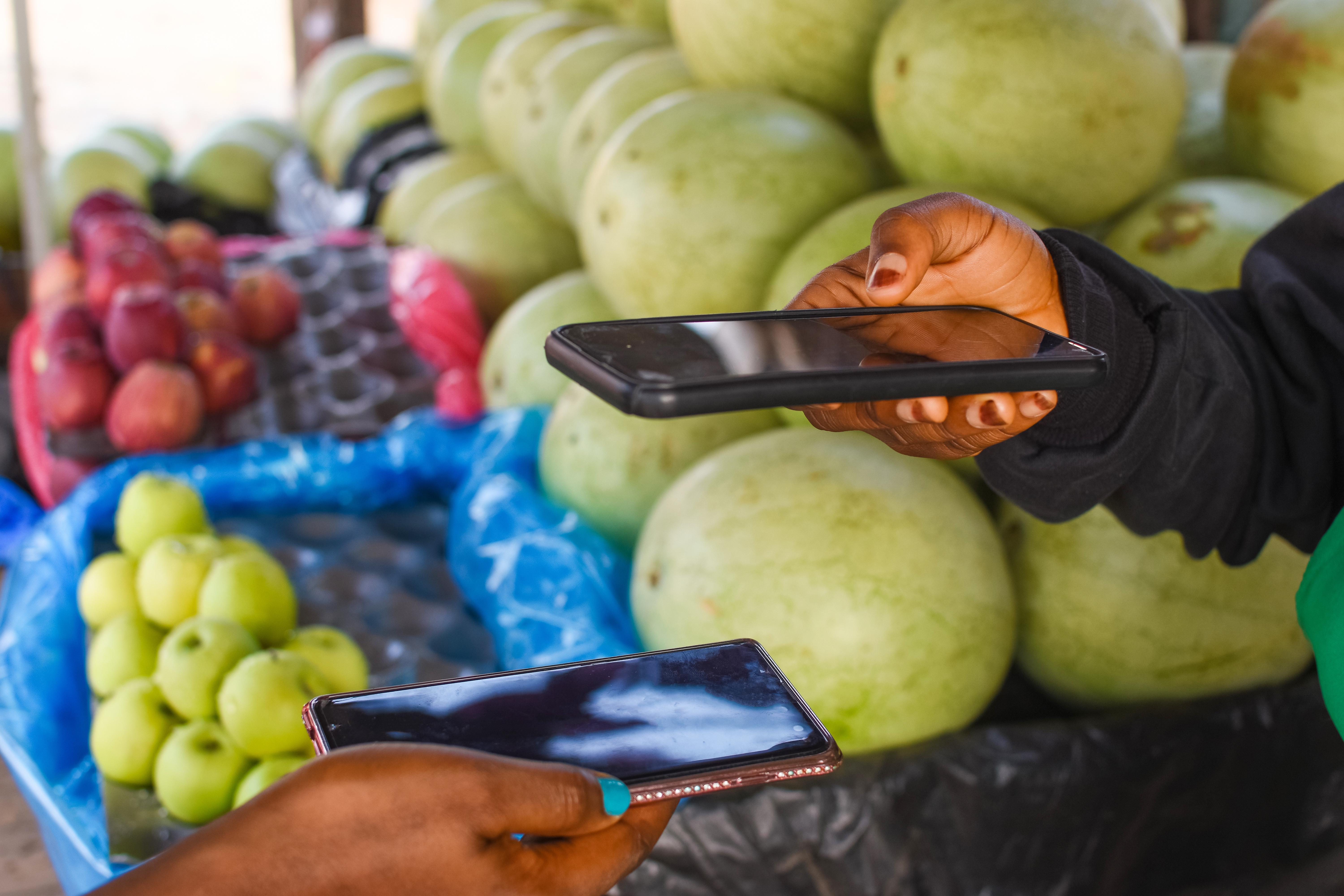Recommended

Blog Post
Key takeaways
- Resolving Afghanistan’s humanitarian emergency requires addressing the country’s liquidity crisis.
- The primary hurdle to moving money into Afghanistan is the risk of money laundering and terrorism financing (ML/TF) associated with doing business there, which has left most financial service providers unwilling to process transactions into the country.
- Digital payment solutions paired with heightened customer due diligence measures — including traceability of payments and biometric identification — could help lower the ML/TF risks associated with payments into and within Afghanistan.
- The risks presented by using digital payments for aid are significantly lower than paying the Taliban to provide security for in-kind assistance, which is the dominant aid modality in Afghanistan today.
- Several factors that hindered earlier efforts to establish digital payments in Afghanistan have improved, including better connectivity and access to mobile phones, newly available interoperable payments solutions, and innovations (like QR codes) that make it easier to scale merchant acceptance networks.
- Donors that use digital payments in Afghanistan must consider how to meet the needs of Afghan women, who are less likely to have access to a phone or identifying documents, and more likely to be illiterate.
- The balance of risks and rewards suggests that investing in digital payment solutions for Afghanistan is a sensible policy for humanitarian and development organizations to adopt and one that government agencies responsible for addressing ML/TF risks should proactively support.
Introduction
Afghanistan’s humanitarian crisis continues to worsen, with the World Food Programme (WFP) reporting that 22.8 million people—more than half the country’s population—are projected to be acutely food insecure in 2022, including 8.7 million at risk of famine-like conditions.[1] Even before the Taliban took over the country on August 15, 2021, Afghanistan’s economy was buckling under the weight of the country’s worst drought in decades, a deteriorating security situation, and the COVID-19 pandemic.[2]
Financial flows into Afghanistan collapsed immediately after the Taliban takeover, as foreign aid was cut, private sector activity fell sharply, and foreign banks and money service providers (collectively: “financial service providers” or FSPs) refused to process payments into the country for fear of inadvertently violating sanctions and anti-money laundering and the countering the financing of terrorism (AML/CFT) regulations.
The exceptional nature of the situation hampers efforts to resume normal financial flows to Afghanistan. Never before has an organization designated as a terrorist group by the United States assumed control of an entire jurisdiction.[3] The United States and other countries responded to this novel circumstance by freezing the country’s foreign exchange reserves held abroad; keeping in place sanctions that criminalize most transactions with the Taliban; and denying official recognition of the Taliban as the legitimate head of the Afghan state, which has prevented the Afghan central bank (Da Afghanistan Bank or DAB) from maintaining correspondent accounts with foreign banks. Cumulatively, these measures have limited access to US dollars in the Afghan economy, leaving Afghans unable to pay for the food, fuel, and imported intermediate inputs their economy relies on.
Actions taken by the international community have also affected the availability and value of Afghanistan’s local currency, the afghani. The freezing of DAB’s foreign exchange reserves and its inability to maintain correspondent accounts abroad has left DAB unable to conduct the dollar auctions it previously used to support the value of the afghani, resulting in sharply rising food and commodity prices.[4] The measures also exacerbated concerns about the solvency of the Afghan banking sector, leading to a run on Afghan banks shortly after the Taliban takeover that DAB responded to by placing strict limits on bank withdrawals. These caps and a string of bank branch closures due to lack of liquidity have impaired economic activity and the humanitarian response. There is also concern about the physical deterioration of afghani notes used in the country because the foreign companies that DAB relies on to print new currency have refused to do business with the Taliban.
In sum, the shortage of domestic and foreign currency in Afghanistan has hobbled the economy and impoverished the middle class. Allowing financial flows into Afghanistan to resume is critical to stabilizing the domestic economy and resolving the humanitarian crisis.
The two biggest challenges to getting money into Afghanistan are the fear FSPs have of violating sanctions or AML rules by unwittingly processing transactions that involve actors affiliated with the Taliban and their unwillingness to pay the high compliance costs required to do business in Afghanistan. These factors, coupled with the limited profitability of doing business in the country, have left FSPs reluctant to process transactions into Afghanistan and pushed those seeking to send money there toward the least visible financial channels.
In a recent survey conducted by the Norwegian Refugee Council of 72 humanitarian NGOs working in Afghanistan, 85 percent reported having some of their international bank transfers blocked between August and December 2021.[5] As a result, less than five percent of the NGOs processed more than five transactions through banks and money service providers (MSPs) during this period, while more than 70 processed transactions through hawala, an informal money transfer network that extends through much of the Middle East and South Asia. At the same time, larger aid organizations, including the UN, have resorted to airlifting shipments of $100 bills into the country, while smaller NGOs have used cryptocurrencies to provide aid.[6]
That payments into Afghanistan have been increasingly pushed into these less visible channels is a perverse outcome for a global AML/CFT regime intended to increase financial transparency. Although DAB strengthened the regulation and supervision of Afghan hawaladars over the last decade, globally hawala remains less regulated than the formal financial system, and it has provided a channel for evading sanctions in the recent past, including those against Iran.[7]The Taliban’s (perhaps temporary) shuttering of the Afghan financial intelligence unit, FinTRACA, the agency responsible for agency receiving, analyzing, and transmitting disclosures on suspicious transactions, and the severing of FinTRACA’s relations with other financial intelligence units suggests that illicit finance risks are virtually unsupervised in the country’s hawala network, as well as its banks.[8]
Relying on physical cash notes raises security concerns for those transporting bulk cash, while the anonymity of cash transactions creates a risk of diversion. The Taliban’s apparent ban on foreign currency exchange has also impeded humanitarian agencies’ efforts to use imported dollars in the country.[9] Cryptocurrencies, which appear to be used at a small but growing scale in Afghanistan, may raise similar concerns about potential diversion given their pseudonymity, but this risk has lessened as new analytic techniques have made it easier to trace blockchain-based payments.
The U.S. Treasury’s Office of Foreign Assets Control (OFAC) has tried to give FSPs greater comfort in processing transactions into Afghanistan by publishing a series of increasingly accommodative General Licenses aimed at ensuring U.S. sanctions “do not prevent or inhibit transactions and activities needed to provide aid to and support the basic human needs of the people of Afghanistan.”[10] General License No. 20 explicitly expanded authorizations for commercial and financial transactions in Afghanistan, including with its governing institutions.[11]
The license gives FSPs the legal cover needed to re-establish correspondent banking relationships with Afghan financial institutions, including DAB, but it remains unclear whether they will be willing to do so. While international recognition of the Taliban as the legitimate head of the Afghan government would further ease the process of reconnecting Afghanistan to the global financial system, such a decision seems unlikely in the near-term.
Over the last several months, different actors within the development and humanitarian and communities have put forward proposals aimed at enabling urgent financial flows into and within Afghanistan, including privatizing the role of DAB, developing a humanitarian exchange facility, and unfreezing at least some of the country’s foreign exchange reserves. While some of these proposals are more likely to gain traction than others, all are partial solutions and by themselves inadequate to solving the problem.
One avenue that warrants further exploration is the role of digital payments in processing transactions into and within Afghanistan. Depending on how they are designed, digital payment systems can lessen ML/TF risks by improving the traceability of fund flows and incorporating the use of biometric data to authenticate the parties involved in a transaction. They can also reduce the cost of providing aid, by reducing reliance on physical cash notes. Finally, they can increase financial access, support livelihoods, and make Afghanistan’s financial sector more resilient.
Like the other proposals under discussion, digital payments represent only a partial solution to Afghanistan’s liquidity crisis. There are challenges to scaling digital payment solutions in the country. But the depth of Afghanistan’s humanitarian crisis and the unwillingness of FSPs to engage with the country demand innovative solutions.
In this brief, we discuss:
- How increased use of digital payments in Afghanistan could help address the immediate financial and humanitarian crises by responding to AML/CFT concerns
- The obstacles to scaling digital payments in Afghanistan
- What the international/development community can do to support greater use of digital payments in the country
Read the full brief here.
[1] World Food Programme. WFP Afghanistan Situation Report. 2022.
[2] Jonathan Dumont. Drought, economic collapse and hunger push Afghanistan to brink of famine. 2021.
[3] US Senate Committee on Banking, Housing, and Urban Affairs. Afghanistan’s Future: Assessing the National Security, Humanitarian and Economic Implications of the Taliban Takeover. 2021.
[4] William Byrd. Afghanistan’s Frozen Foreign Exchange Reserves: What Happened, What’s Next. 2022.
[5] Erica Moret. Life and Death: NGO access to financial services in Afghanistan. 2022.
[6] Robin Emmott, John O'Donnell and Jonathan Landay. Exclusive-Cash airlifts planned to bypass Taliban and help Afghans -sources. 2021.
Lee Fang. Starving Afghans Use Crypto to Sidestep U.S. Sanctions, Failing Banks, and the Taliban. 2022.
[7] Anna Fifield. "How Iranians are avoiding sanctions. 2008.
[8] Alex Zerden. Reassessing Counter Terrorism Financing in a Taliban-Controlled Afghanistan. 2021.
Reuters. Anti-laundering unit goes off-grid, fraying Afghan ties to global finance. 2021.
[9] Reuters. U.N. Has Millions in Afghanistan Bank, but Cannot Use It. 2022.
[10] U.S. Department of the Treasury. U.S. Treasury Issues General License to Facilitate Economic Activity in Afghanistan. 2022.
[11] US Department of the Treasury. U.S. Treasury Issues General License to Facilitate Economic Activity in Afghanistan. 2022.
Rights & Permissions
You may use and disseminate CGD’s publications under these conditions.





